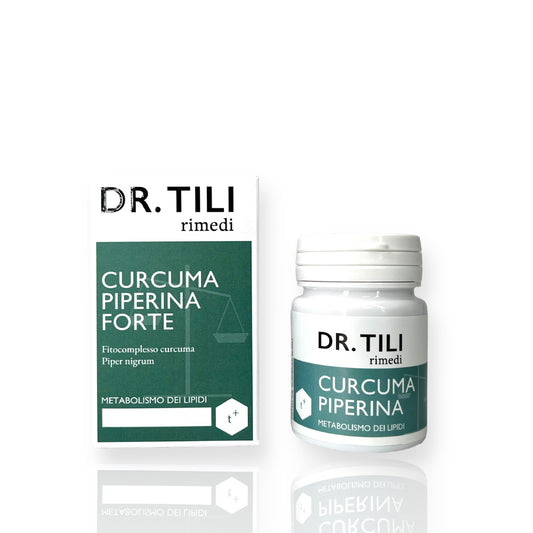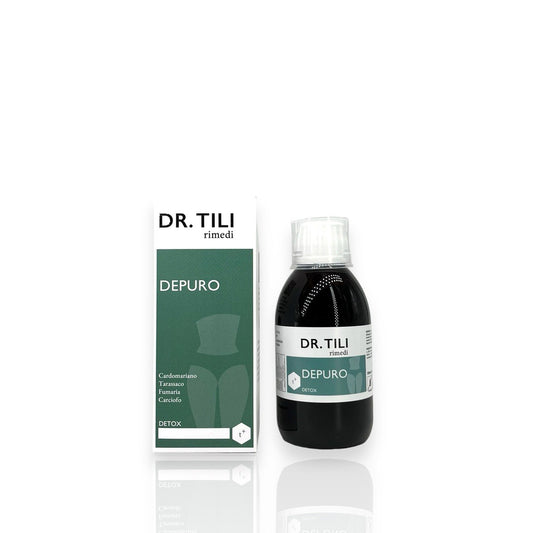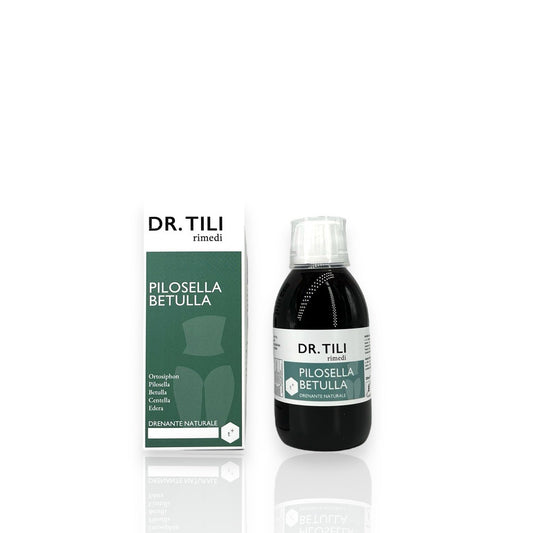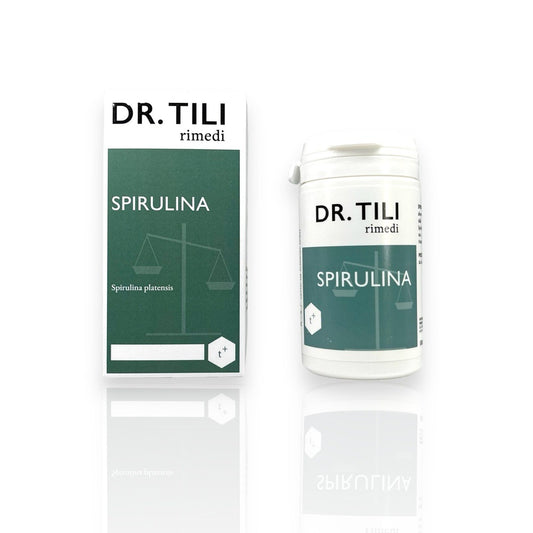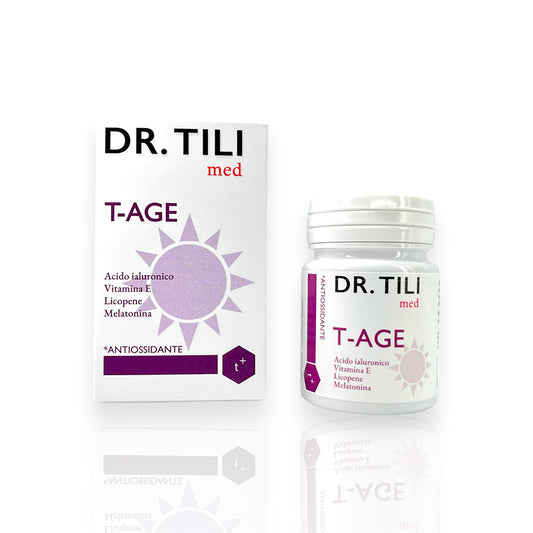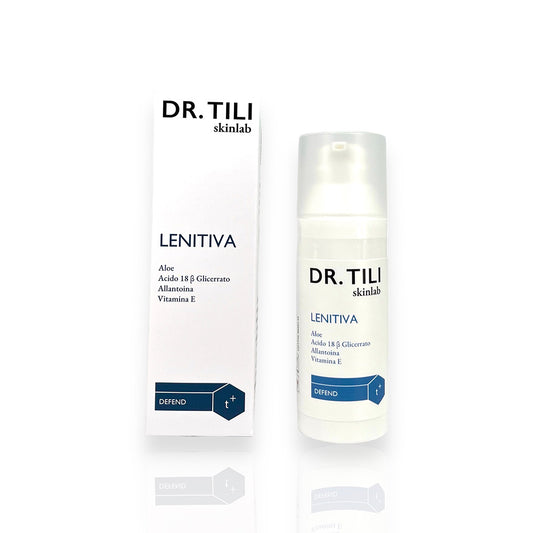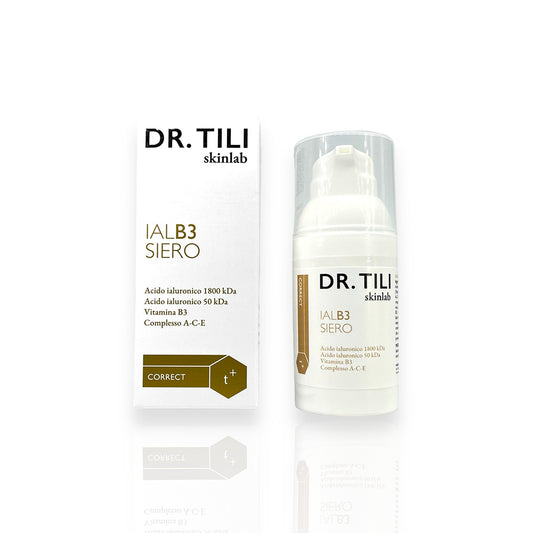OPELLA HEALTHCARE ITALY Srl
Buscopan Compositum 10mg + 500mg 20 coated tablets
Buscopan Compositum 10mg + 500mg 20 coated tablets

Pickup available at Farmacia Tili
Usually ready in 24 hours
PRODUCT NET WEIGHT
PRODUCT NET WEIGHT
EAN
EAN
029454042
MINSAN
MINSAN
029454042
Buscopan Compositum 10mg + 500mg 20 coated tablets is a drug formulated for the treatment of paroxysmal pain associated with gastrointestinal tract conditions and spastic pain. Each coated tablet contains two active ingredients: hyoscine N-butylbromide (10 mg) and paracetamol (500 mg), which act synergistically to relieve pain and reduce muscle spasms. This product is indicated to treat biliary tract dyskinesias and other conditions that require antispasmodic and analgesic action. The tablets are designed to be swallowed whole, ensuring optimal release of the active ingredients. Buscopan Compositum is an effective solution for those seeking rapid and targeted relief from painful symptoms associated with gastrointestinal disorders.
ACTIVE INGREDIENTS
Active ingredients contained in Buscopan Compositum 10mg + 500mg 20 coated tablets - What is the active ingredient of Buscopan Compositum 10mg + 500mg 20 coated tablets?
Buscopan Compositum 10 mg + 500 mg coated tablets One coated tablet contains: Active ingredients: N-butyl hyoscine bromide 10 mg, paracetamol 500 mg Buscopan Compositum 10 mg + 800 mg suppositories One suppository contains: Active ingredients: N-butyl hyoscine bromide 10 mg, paracetamol 800 mg Excipient with known effect: sodium. For the full list of excipients, see section 6.1.
EXCIPIENTS
Composition of Buscopan Compositum 10mg + 500mg 20 coated tablets - What does Buscopan Compositum 10mg + 500mg 20 coated tablets contain?
Coated tablets : Core : microcrystalline cellulose, sodium carmellose, maize starch, ethylcellulose, colloidal silica, magnesium stearate. Coating : hypromellose, polyacrylates, titanium dioxide, macrogol 6000, talc, silicone antifoaming agent. Suppositories : glyceride esters of saturated fatty acids, soya lecithin.
DIRECTIONS
Therapeutic indications Buscopan Compositum 10mg + 500mg 20 coated tablets - Why is Buscopan Compositum 10mg + 500mg 20 coated tablets used? What is it used for?
Paroxysmal pain in gastrointestinal tract conditions, spastic pain, dyskinesia of the biliary tract.
CONTRAINDICATIONS SIDE EFFECTS
Contraindications Buscopan Compositum 10mg + 500mg 20 coated tablets - When should Buscopan Compositum 10mg + 500mg 20 coated tablets not be used?
Buscopan Compositum is contraindicated in case of: - hypersensitivity to the active ingredients (hyoscine N-butylbromide and paracetamol), to nonsteroidal anti-inflammatory drugs or to any of the excipients listed in paragraph 6.1; - acute angle glaucoma; - prostatic hypertrophy or other causes of urinary retention; - mechanical stenosis of the gastrointestinal tract; - pyloric stenosis and other conditions stenosing the gastrointestinal tract; - paralytic or obstructive ileus; - megacolon; - ulcerative colitis; - reflux esophagitis; - intestinal atony in the elderly and debilitated subjects; - myasthenia gravis; - pediatric age; - paracetamol-based products are contraindicated in patients with manifest glucose-6-phosphate dehydrogenase insufficiency and in those affected by severe haemolytic anaemia; - severe hepatocellular insufficiency (Child - Pugh C). The use of Buscopan Compositum is contraindicated in case of rare hereditary conditions that may be incompatible with an excipient of the product (see paragraph 4.4). Buscopan Compositum 10 mg + 800 mg suppositories must not be used in patients with a history of allergy to soya or peanuts.
DOSAGE
Quantity and method of taking Buscopan Compositum 10mg + 500mg 20 coated tablets - How to take Buscopan Compositum 10mg + 500mg 20 coated tablets?
The following dosage is recommended for adults, unless otherwise prescribed by your doctor: Coated tablets 1-2 tablets 3 times a day. Do not exceed 6 tablets per day. The tablets should not be chewed, but swallowed whole with a sufficient amount of water. Suppositories 1 suppository 3-4 times a day. Do not exceed 4 suppositories per day. Duration of treatment Buscopan Compositum should not be taken for more than three days unless prescribed by your doctor (see section 4.4). Paediatric population The use of Buscopan Compositum is not recommended in children under 10 years of age. The concomitant administration of other drugs containing paracetamol may require a dosage adjustment, see section 4.4.
CONSERVATION
Storage Buscopan Compositum 10mg + 500mg 20 coated tablets - How to store Buscopan Compositum 10mg + 500mg 20 coated tablets?
Coated tablets: store below 25°C. Suppositories: store below 30°C.
WARNINGS
Warnings Buscopan Compositum 10mg + 500mg 20 coated tablets - About Buscopan Compositum 10mg + 500mg 20 coated tablets it is important to know that:
Buscopan Compositum should not be taken for more than 3 days unless directed by your doctor. Instruct the patient to contact their doctor if the pain persists or worsens, if new symptoms occur, or if redness or swelling occurs as these may be symptoms of a serious condition. In case of severe abdominal pain of unknown origin that persists, worsens or is accompanied by symptoms such as fever, nausea, vomiting, altered bowel movements, distended abdomen, drop in blood pressure, fainting or blood in the stool, seek medical advice immediately. To prevent overdose, ensure that other medicines taken at the same time do not contain paracetamol, one of the active substances of Buscopan Compositum. Liver damage may occur if the recommended dosage of paracetamol is exceeded (see section 4.9). Buscopan Compositum should be used with caution in case of: • glucose-6-phosphate dehydrogenase insufficiency; • liver dysfunction (e.g. due to chronic alcohol abuse, hepatitis); • chronic alcohol use even if recently stopped; • impaired renal function; • Gilbert's syndrome; • mild to moderate hepatocellular insufficiency (Child - Pugh A/B); • low glutathione reserves. Administer with caution to subjects with renal or hepatic insufficiency. In such conditions Buscopan Compositum should be administered only under medical supervision, if necessary, reducing the dose or prolonging the interval between individual administrations. Blood count and renal and hepatic function should be monitored after prolonged use. The extensive use of analgesics, especially at high doses, may induce headache which should not be treated with increased doses of the medicinal product. Severe acute hypersensitivity reactions (e.g. anaphylactic shock) are observed very rarely. Treatment should be discontinued at the first signs of a hypersensitivity reaction following the administration of Buscopan Compositum. Serious skin reactions: Life-threatening reactions such as Stevens-Johnson syndrome (SJS) and toxic epidermal necrolysis (TEN) have been reported with the use of Buscopan Compositum. Patients should be informed of the signs and symptoms and monitored closely for skin reactions. If symptoms or signs of Stevens-Johnson syndrome or toxic epidermal necrolysis (e.g. progressive skin rash with blisters or mucosal lesions) occur, the patient should immediately stop treatment with Buscopan Compositum and consult a doctor. Hepatotoxicity with paracetamol may occur even at therapeutic doses, after short-term treatment and in patients without pre-existing liver dysfunction (see section 4.8). Abrupt cessation of analgesics after prolonged use at high doses may cause withdrawal symptoms (e.g. headache, tiredness, nervousness), which usually resolve within a few days. Resumption of analgesics should be subject to medical advice and to the resolution of withdrawal symptoms. Due to the potential risk of anticholinergic complications, it should be used with caution in patients predisposed to narrow-angle glaucoma, in patients subject to intestinal or urinary tract obstruction and in those prone to tachyarrhythmia with disorders of the central autonomic nervous system, in tachyarrhythmias, in arterial hypertension, in congestive heart failure and in hyperthyroidism. All antimuscarinics reduce the volume of bronchial secretions; therefore they should be used with caution in patients with chronic obstructive inflammatory diseases of the respiratory system. During treatment with paracetamol, before taking any other drug, check that it does not contain the same active ingredient, since if paracetamol is taken in high doses, serious adverse reactions may occur, see section 4.2. Instruct the patient to contact the doctor before combining any other drug. See also section 4.5. Buscopan Compositum 10 mg + 500 mg tablets contain 4.32 mg sodium per tablet, i.e. less than 1 mmol (23 mg) sodium, i.e. it is essentially “sodium-free”.
INTERACTIONS
Interactions Buscopan Compositum 10mg + 500mg 20 coated tablets - Which medicines or foods can modify the effect of Buscopan Compositum 10mg + 500mg 20 coated tablets?
Use with extreme caution and under close monitoring during chronic treatment with drugs that can determine the induction of hepatic monooxygenases or in case of exposure to substances that can have this effect (for example rifampicin, cimetidine, hypnotics and antiepileptics such as glutethimide, phenobarbital, carbamazepine, phenytoin). The same situation occurs with potentially hepatotoxic substances and with alcohol abuse. Concomitant administration of chloramphenicol may induce a prolongation of the half-life of chloramphenicol, with the risk of increasing its toxicity. Paracetamol may increase the risk of bleeding in patients taking warfarin and other vitamin K antagonists. Patients taking paracetamol and vitamin K antagonists should be monitored for appropriate coagulation and for the occurrence of bleeding. Co-administration of flucloxacillin with paracetamol may lead to metabolic acidosis in patients with risk factors for glutathione depletion. Concomitant use of paracetamol and zidovudine (AZT or retrovir) increases the tendency to reduce leukocytes (neutropenia). Therefore Buscopan Compositum should be taken together with zidovudine only under medical supervision. Probenecid inhibits the binding of paracetamol to glucuronic acid, thereby reducing the clearance of paracetamol by approximately a factor of 2. The dose of paracetamol should therefore be reduced during concomitant administration with probenecid. Cholestyramine reduces the absorption of paracetamol. The anticholinergic effect of medicinal products such as tri- and tetracyclic antidepressants, antihistamines, antipsychotics, quinidine, amantadine, disopyramide and other anticholinergics (e.g. tiotropium, ipratropium, atropine-like substances) may be potentiated by Buscopan Compositum. Concomitant treatment with dopamine antagonists, such as metoclopramide, may reduce the effect of both drugs on the gastrointestinal tract. Tachycardia induced by β-adrenergic drugs may be potentiated by Buscopan Compositum. The tachycardic effects of beta-adrenergic agents may be intensified by Buscopan Compositum. Interference with laboratory tests Paracetamol intake may affect the determination of uric acid by the phosphotungstic acid method and of blood glucose by the glucose oxidase-peroxidase method. In addition for oral use : Drugs that slow gastric emptying (e.g. propantheline) can reduce the rate of absorption of paracetamol, delaying its therapeutic effect; on the contrary, drugs that increase the rate of gastric emptying (e.g. metoclopramide or domperidone) lead to an increase in the rate of absorption of paracetamol.
SIDE EFFECTS
Like all medicines, Buscopan Compositum 10mg + 500mg 20 coated tablets can cause side effects - What are the side effects of Buscopan Compositum 10mg + 500mg 20 coated tablets?
Adverse reactions are listed below by system organ class and frequency, using the following categories: Very common: ≥ 1/10 Common: ≥ 1/100, < 1/10 Uncommon: ≥ 1/1,000, < 1/100 Rare: ≥ 1/10,000, < 1/1,000 Very rare: < 1/10,000 Not known: frequency cannot be estimated from the available data. Blood and lymphatic system disorders Not known: pancytopenia, agranulocytosis, thrombocytopenia, neutropenia, leucopenia, haemolytic anaemia. Immune system disorders, Skin and subcutaneous tissue disorders Uncommon: skin reactions, abnormal sweating, pruritus, nausea. Rare: erythema, decreased blood pressure including shock. Very rare: urticaria, rash, exanthema, severe skin reactions (such as Stevens-Johnson syndrome (SJS), toxic epidermal necrolysis (TEN), and generalized exanthematous pustulosis (AGEP)). Not known: anaphylactic shock, anaphylactic reactions, drug skin reaction, dyspnoea, hypersensitivity, angioedema, fixed drug eruption. Cardiac disorders . Rare: tachycardia. Respiratory, thoracic and mediastinal disorders . Not known: bronchial muscle spasms (especially in patients with a history of bronchial asthma or allergy). Gastrointestinal disorders . Uncommon: dry mouth. Hepatobiliary disorders . Not known: increased transaminases, cytolytic hepatitis which may lead to acute liver failure. Renal and urinary disorders . Not known: urinary retention. Cases of erythema multiforme have been reported with the use of paracetamol. Hypersensitivity reactions such as angioedema, laryngeal edema have been reported. The following undesirable effects have also been reported: anaemia, changes in liver function and hepatitis, changes in kidney function (acute renal failure, interstitial nephritis, haematuria, anuria), gastrointestinal reactions and dizziness. Drowsiness, mydriasis, accommodation disorders, increased ocular tone, constipation and difficulty urinating have also been reported. Additional adverse reactions only for suppositories Gastrointestinal disorders . Not known: anorectal discomfort. Reporting of suspected adverse reactions Reporting suspected adverse reactions that occur after authorisation of the medicinal product is important. It allows continued monitoring of the benefit/risk balance of the medicinal product. Healthcare professionals are asked to report any suspected adverse reactions via the national reporting system at https://www.aifa.gov.it/content/segnalazioni-reazioni-avverse.
OVERDOSE
Overdose Buscopan Compositum 10mg + 500mg 20 coated tablets - What are the risks of Buscopan Compositum 10mg + 500mg 20 coated tablets in case of overdose?
Due to paracetamol overdose, elderly people, young children, patients with liver disease, chronic alcohol consumption or chronic malnutrition, as well as patients treated with enzyme-inducing drugs are at increased risk of intoxication, even with fatal outcome. Symptoms Hyoscine N-butylbromide In case of overdose, anticholinergic effects have been observed. Paracetamol In cases of chronic intoxication, haemolytic anaemia, cyanosis, weakness, dizziness, paraesthesia, tremors, insomnia, headache, memory loss, central nervous system irritation phenomena, delirium and convulsions may occur. Symptoms usually appear during the first 24 hours and include pallor, nausea, vomiting, anorexia and abdominal pain. Patients may then experience a temporary subjective improvement but mild abdominal pain, perhaps indicative of liver damage, may persist; a considerable increase in transaminases, jaundice, coagulation disorders, hypoglycaemia and progression to hepatic coma may occur. A single dose of paracetamol of approximately 6 g or more in adults or 140 mg/kg in children may cause hepatocellular necrosis. This may induce irreversible complete necrosis and subsequently hepatocellular failure, gastrointestinal bleeding, metabolic acidosis, encephalopathy and disseminated intravascular coagulation which may progress to coma and death. Concurrent increases in liver transaminases (AST, ALT), lactate dehydrogenase and bilirubin with reduction in prothrombin levels and an increase in prothrombin time have been observed, occurring 12 - 48 hours after ingestion. Clinical symptoms of liver damage are usually evident after 2 days and reach a maximum after 4 - 6 days. Acute renal failure with acute tubular necrosis may develop even in the absence of severe liver damage. Other non-hepatic symptoms such as myocardial abnormalities, pancytopenia and pancreatitis have also been reported and should be considered after paracetamol overdose. Therapy Hyoscine N-butylbromide If required, parasympathomimetic medicinal products should be administered. In cases of glaucoma, an ophthalmological examination should be performed urgently. Cardiovascular complications should be treated according to the usual therapeutic principles. In case of respiratory paralysis, intubation and artificial respiration should be considered. For urinary retention, catheterization may be necessary. In addition, appropriate supportive measures should be used as necessary. Paracetamol Where paracetamol intoxication is suspected, intravenous administration of group SH donors such as N-acetylcysteine within the first 10 hours of ingestion is indicated. Although N-acetylcysteine is most effective if given within this period, it may still offer some protection if given 48 hours after ingestion; in this case, it should be taken for a longer period. Plasma paracetamol concentrations may be lowered by dialysis. Quantitative analyses of plasma paracetamol concentrations are recommended. Further measures will depend on the severity, nature and course of clinical symptoms of paracetamol intoxication and should follow standard intensive care protocols.
PREGNANCY AND BREASTFEEDING
If you are pregnant or breast-feeding, think you may be pregnant or are planning to have a baby, ask your doctor for advice before taking Buscopan Compositum 10mg + 500mg 20 coated tablets.
Pregnancy There are no adequate data on the use of Buscopan Compositum during pregnancy. Long-term experience with the two substances in monotherapy has indicated insufficient evidence of adverse effects during pregnancy in women. After the use of hyoscine N-butylbromide, preclinical studies in rats and rabbits have shown neither embryotoxic nor teratogenic effects. During pregnancy, potential data on paracetamol overdose have not shown an increased risk of malformations. Reproduction studies to investigate oral use have not shown signs suggesting malformations of foetotoxicity. Epidemiological studies on neurodevelopment in children exposed to paracetamol in utero show inconclusive results. If clinically necessary, under normal conditions of use, paracetamol can be taken during pregnancy after careful consideration of the risk-benefit ratio. During pregnancy, paracetamol should not be taken for prolonged periods, at high doses, or in combination with other medicinal products since safety has not been confirmed in such cases. Therefore, Buscopan Compositum is not recommended during pregnancy. Breastfeeding The safety of hyoscine N-butylbromide during breastfeeding has not yet been established. Paracetamol is excreted in breast milk. However, at therapeutic doses it is expected that it does not cause undesirable effects in the newborn. The decision whether to continue or discontinue breastfeeding or to continue or discontinue therapy with Buscopan Compositum must be made taking into account the benefit of breastfeeding for the child and the benefit of therapy with Buscopan Compositum for the mother. Fertility No studies on the effects on fertility in humans have been performed (see section 5.3).
DRIVING AND USE OF MACHINERY
Taking Buscopan Compositum 10mg + 500mg 20 coated tablets before driving or using machines - Does Buscopan Compositum 10mg + 500mg 20 coated tablets affect driving or using machines?
No studies on the ability to drive and use machines have been performed. However, anticholinergics can induce visual accommodation disorders and drowsiness, which must be taken into account by those who drive vehicles or machines or carry out tasks requiring an intact level of alertness.



